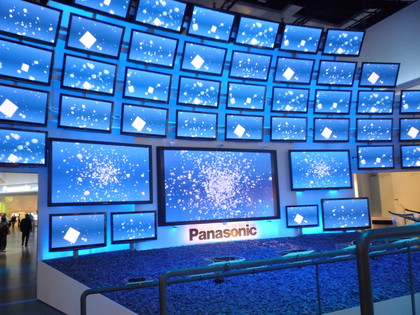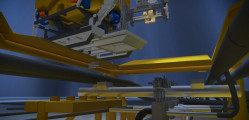Pretty Posts
- Streamlining Your Sales Processes: 7 Dos and Don’ts for CRM Success
- Biggest Financial Mistakes Millennial’s Are Making And How To Avoid Them
- New infographic shows how Comic Con has transformed into 135,000 sell-out event
- 6 Reasons Everyone Should Learn Web Development
- Visual portrait of The Evolution of Mobile Phones [Infographic]
The television wars between Liquid Crystal Display screens (LCD) and plasma screens are over. Japanese company Panasonic, the biggest advocate of the plasma screen, have announced that their last plasma factory will close this year.
It is unbeknownst to us whether Panasonic are permanently retiring plasma, but what is a certainty, the product is dying. Industry analyst Steve Koenig stated: “Plasma has some life left, but by 2015, the market opportunity is getting small.”
If you look at the sales of plasma screens you can see they are in trouble. In 2012, there was 2.98 million units sold in the U.S. amounting to $2.15billion; analysts have forecasted sales to shrink to 1.33million by 2015, with revenues totalling $923. By way of comparison, American consumers purchased 36.2million LCD TVs in 2012, which roughly equates to $16.8billion in sales. Experts believe sales will slightly increased by the year 2015.
Peculiarly there are very few differences between the two types of television, the biggest difference being shelf-life. Expensive LCD TVs last longer than most, in most cases over 100,000 hours, which is nearly double that of a plasma, In terms of longevity, high quality LCD screens win hands down. However, cheaper LCD models that are in the £200 bracket, are more error prone than plasma, due to the cheaper back panels the lighting can sometime falter, thus making a bigger need for an extended warranty for your LCD TV.
Beneath the screen the two are inseparable. LCD screens are brighter and have better anti-glare features. That is not to say plasma is dim. Granted they do tend to be darker and do have a certain glare in light rooms but they do surpass LCD screens in showing details in darker areas of any given image.
Colours in general are better on a plasma screen. They have the superior colour saturation and have the better detail towards the low end. LCD panels are improving but are still lagging behind the colours witnessed on plasma. What’s more, older or cheaper LCD TVs are no match whatsoever for the plasma.
Gamers know all about motion trails, this is an issue that is obsolete on plasma screens and one that is nearly resolved in LCD screens – cheaper models do experience problems with motion blur though. Plasmas are also better at different viewing angles.
In terms of price, LCD’s will always be more expensive. On Amazon the Panasonic ST60 plasma TV retails for $1,295.00, it has a five-star rating and CNET named it as an Editors’ Choice. In contrast, the Panasonic WT60 LCD TV will set you back $2889.99, the differences between the two are minimal.
This is the plasma conundrum. No matter where you shop, plasma TVs will always be cheaper than LCD televisions. And despite the two being near identical consumers gravitate towards LCD. For some reason we perceive LCD TVs as the better of the two.
It really is a strange phenomena and one that has no real explanation. It appears that there is very little plasma can do to regain brand appeal. In terms of TV screens, it has lost the war and evidently will cease to exist in the near-future.




Leave a Reply